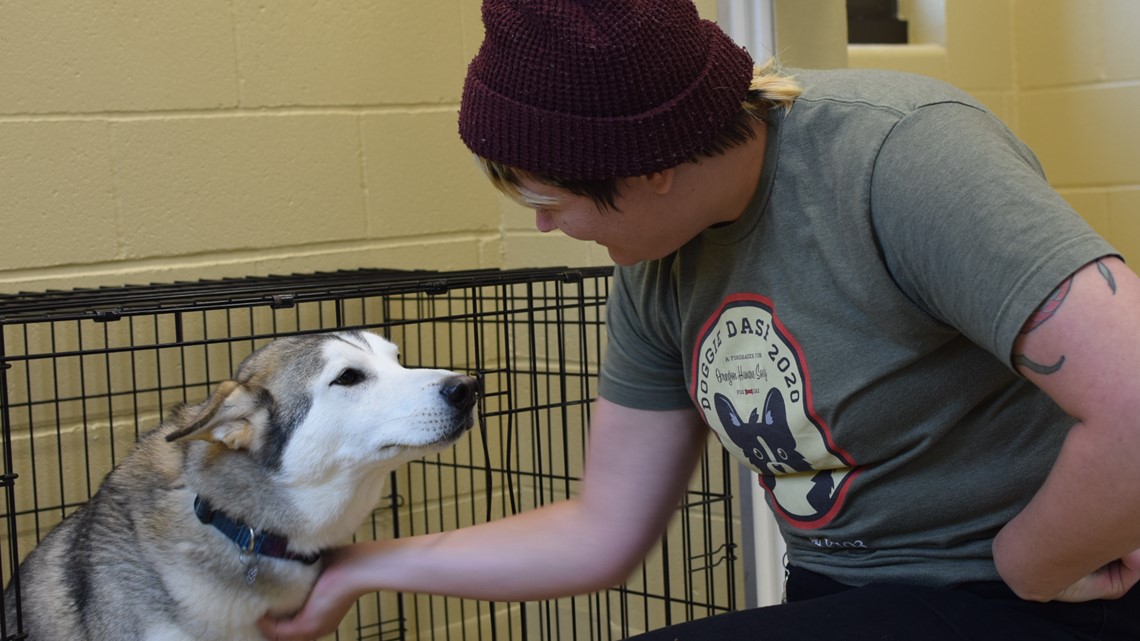PORTLAND, Ore. — There’s a new space at the Oregon Humane Society (OHS) to make sure every animal that scampers through their doors is ready for their forever home. The new Behavior and Rescue Center opened in December 2022 as part of OHS’ $40 million expansion project.
It’s an important piece of the animal adoption process. Many of the animals that come into OHS' care come from traumatic situations and they need more time to heal and train for a successful shot at a new home.
Animals, like Bart, a chihuahua pit bull mix.
“He is just so fun to get to know because he is shy outwardly, but once you get to know him, he is a sassy pants,” Bart’s owner Rachel Cain said. “And he is a total love bug.”
While he still takes a while to warm up to strangers, he’s grown leaps and bounds since he first came to OHS and into Cain’s life.
“When we first got him, he was very shy and timid,” she said. “And I know he did a lot of work with the B-Mod trainers here before we adopted him.”
B-Mod means behavior modification trainers. They’re specialists at the Behavior and Rescue Center.


“Being able to come and talk to the trainers and the folks that had been working with him at OHS really helped make that adoption process smooth and help set us up for success when Bart came home,” Cain said.
OHS’ Behavior and Modification Program has been around for almost 10 years, but just recently opened this new space next to their main campus in Portland. The program pairs shelter animals with special behavior needs with trainers and behavior experts, such as Annika Howland.
Howland is the K-9 behavior modification manager at the center and works with these animals to create customized plans to get them ready for adoption.
It’s much-needed extra time and care for these animals, many of whom have been neglected or abused. That’s, unfortunately, the case for a dog going through the program right now named Pop Tart.
“So, it’s really just teaching her [Pop Tart] how to be a pet and exist with people — loud noises and big spaces — those things kind of make her nervous but now she has a trust with people where she can be a little bit more confident in those situations,” Howland said.
To do that, Pop Tart gets practice in the Real Life Room.
“It’s supposed to be set up like somebody’s living room. It’s a quiet space with natural light so they can look out the window, couches, a dog bed,” Howland said. “This gives the dogs a place to relax, to hang out, decompress. We can also test the dogs out and how they’re going to do in an apartment or in a home by themselves.”
As for our feline friends, well, they get a special treat in the Sunroom.


Erika Sims is the feline behavior modification manager.
“Most of the cats that we work with in this program are shy, fearful or shut down. So, we’re working on confidence and trust with handling and interacting with people,” Sims said. “We’ll use food as a reward system, play therapy to get them more comfortable so that they can be successful in their new adoption homes.”
Before the Behavior and Rescue Center opened, the space for this work was less than ideal. They used spaces at the shelter, but it really wasn’t the best for healing.
“It’s been transformational,” Sims said. “In the old facility we were working...basically in a hallway, and it was very loud, doors closing, kennels were not suitable for what the cats needed.”
Now, they’re in a new space and seeing even better results in the animals they help. Pets are now graduating from behavior modification and are ready for adoption 25% faster than before.
Pets like Bart, Cain’s sassy pants love bug. He’s been part of their family for over a year now and they can’t imagine life without him.
“He is obsessed with our other dog, his name is Ted Danson,” Cain said.
After bringing Bart home, Cain was inspired to make a career decision. She got a job at OHS.
“Just knowing that there was a team around him to get him confident and make sure he went to a good home, that just really inspired me to even just apply,” Cain said.

